リズ・トーマスのハイキング・アズ・ア・ウーマン#24 / スルーハイカーは冬に何をしているの?(前編)ハイカーの冬の仕事
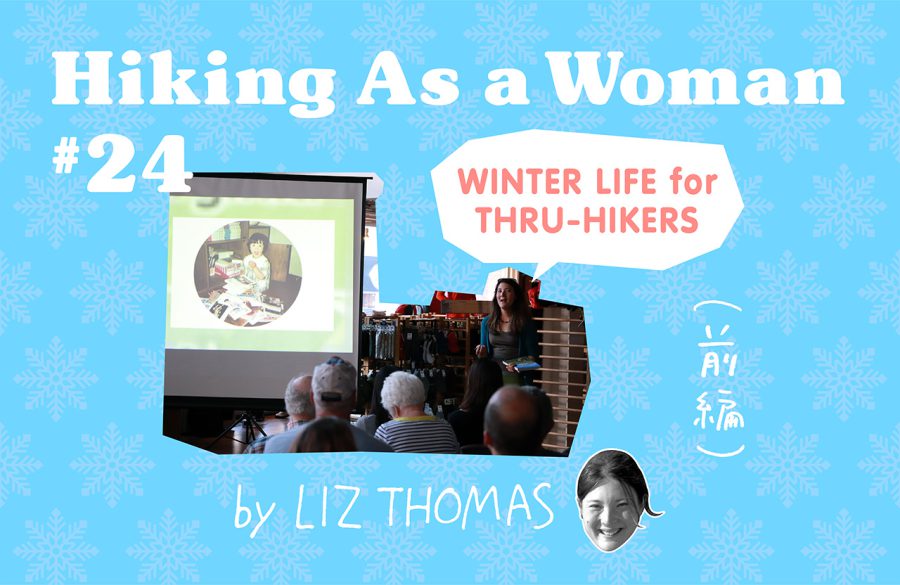
What do thru-hikers do in the winter?
Winter can be a dreaded time for thru-hikers. After a summer of fun and adventure, most thru-hikers must return home to work. For a lucky few, the next summer will bring another long hike. For those hikers, winter becomes a time to save for the upcoming hiking season.
To understand what thru-hikers are doing in the winter, I interviewed repeat hikers—those who manage to hike year after year. For the type of thru-hikers who adventure every summer, winter becomes an important time to prepare for their next adventure. While no two hikers have the same winter strategy, each hiker agrees that they had to be creative about making winter work for them.
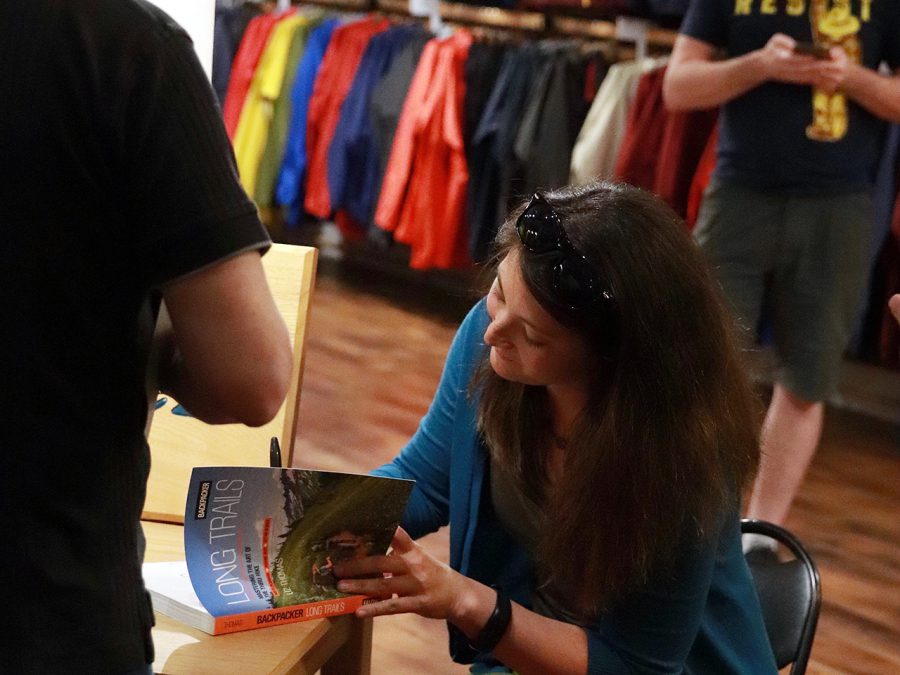
Liz Thomas signing a copy of her book by John Carr
Liz “Snorkel” Thomas
As a thru-hiker who manages to hike every summer, many people ask me what I do in the winter and how I can afford to live a hiking life. I credit my ability to hike on luck, but also on careful planning and strategizing. It is only possible because every decision I make—from what job I take to whether I should buy new clothes—is tied to the question, “Will this decision make it easier or harder to thru-hike this coming year?”
Like many people who manage to hike every year, I work as an independent contractor. My work is tied to projects, not a single company. Depending on what projects and clients I am able to take on, some years are easier to save than others. That’s why some years, I can hike a lot and other years, I can only hike for a few weeks.
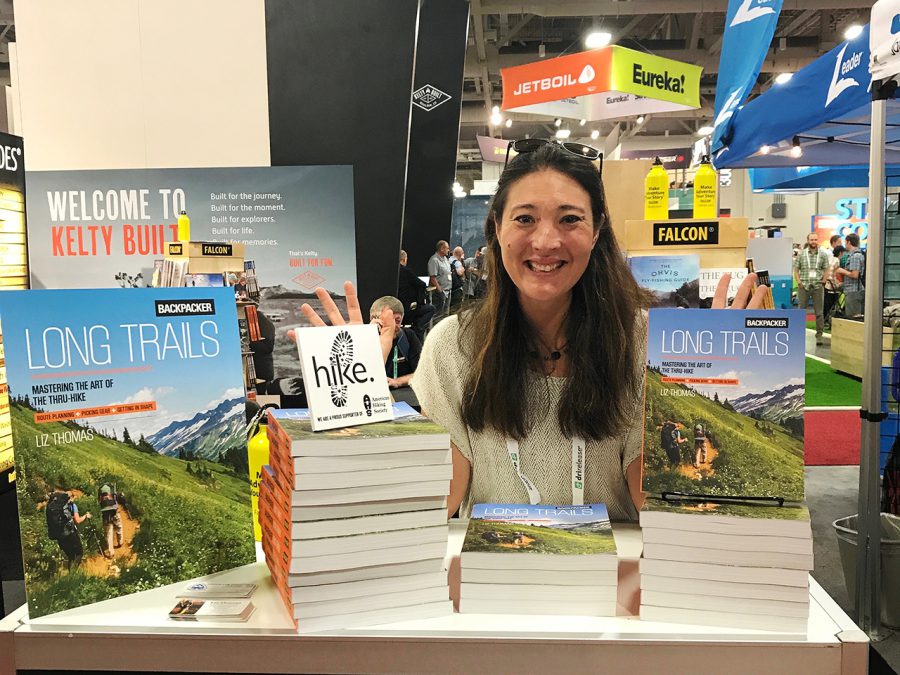
During the winter, most of my projects are writing. I write for magazines like Backpacker or work on bigger writing projects, like my book Long Trails: Mastering the Art of the Thru-hike. When my story or book is published, my work is over and I can go outdoors and play.
Recently, I also write for my own gear review website Treeline Review. Hiking and gear are a main focus of what I write about, so I can often integrate hiking with my work.
I also give motivational speeches at universities, businesses, and clubs to encourage people to overcome challenges, take risks, be courageous, and learn about personal growth. The stories in my presentations are about true experiences I’ve had on my hikes and what those challenges have taught me. The lessons of hiking translate well to work and personal life.
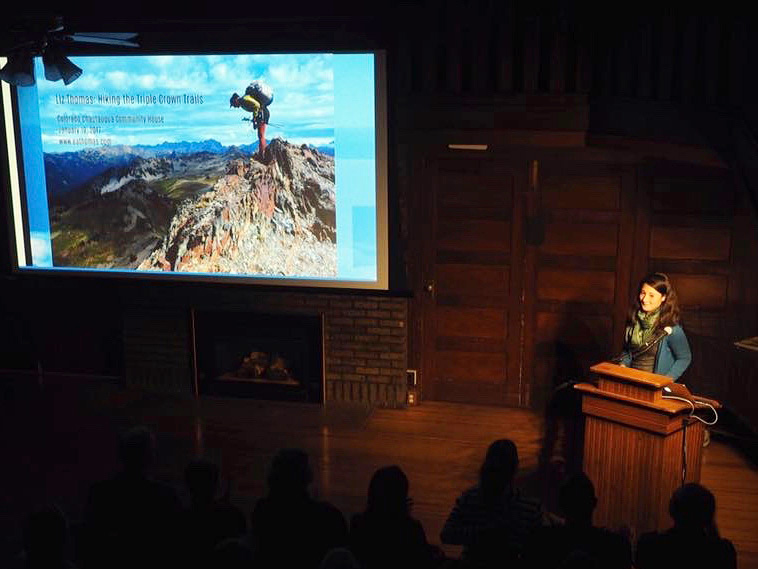
I also lead workshops and classes to teach others to backpack. Teaching classes and giving speeches are ideal for me because I can often schedule them in the late fall, winter, and spring. This leaves me free to hike during the summer.
Writing and speaking about hiking isn’t a lucrative profession. I wouldn’t advise the path I took to other hikers because the work isn’t reliable. For the next part of this story, I interviewed other hikers to better understand how hikers of all career stages and professions have managed to make hiking every year happen.
The Punisher and FE Mike
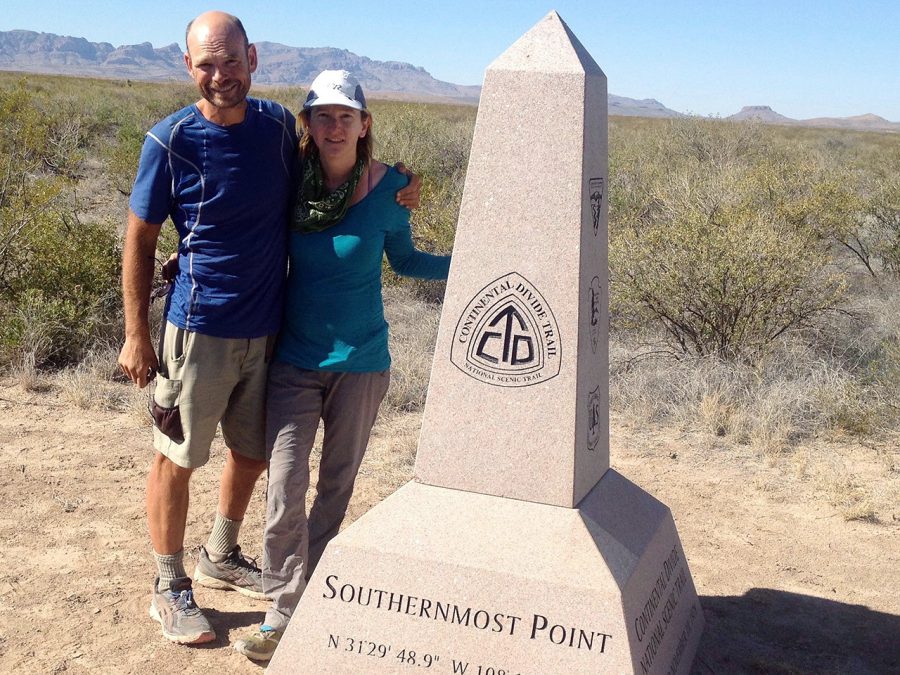
Mike and Naomi finish their Triple Crown on the CDT at the Mexico border. Photo courtesy Mike Unger and Naomi Hudetz
Many hikers think that if they want to make thru-hiking a part of their life every year, that they have to abandon their professions and work at service or retail jobs. My good friends Mike “FE Mike” and Naomi “The Punisher” Hudetz are examples of how it is possible to return every post-thru-hiking season to a professional career.
For people who have already established their careers before becoming serial thru-hikers, many choose to continue work in their chosen field. Many hikers manage this by working as independent contractors instead of as company men. The Punisher and FE Mike started thru-hiking after they had already developed successful professional careers. Now, they continue to practice those careers—except for the time each year when they are thru-hiking.
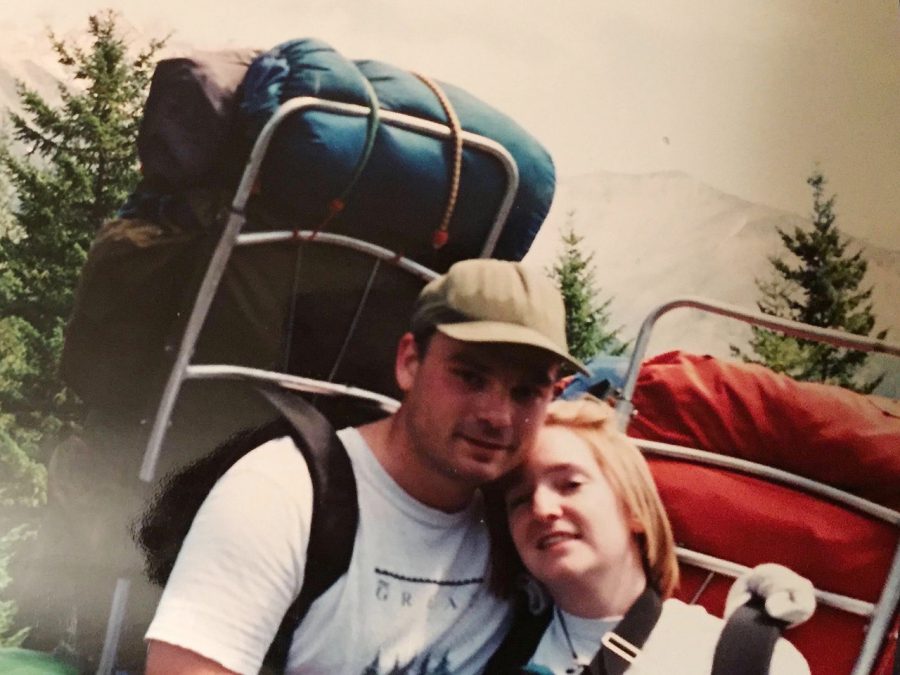
Mike and Naomi on a backpacking trip before they became ultralight thru-hikers. Photo courtesy Mike Unger and Naomi Hudetz
Mike and Naomi’s job titles required many years of schooling, specialization, and tests for certification. Mike worked as an urban planner and Naomi as an actuary. Before they became thru-hikers, they were on promotion tracks in their companies. But after they took a break from their career to hike the PCT, they realized what would make them happier than a promotion: the ability to hike long trails each year.
Mike and Naomi decided to prioritize thru-hiking in their life decisions. To save money, they downsized their house. They moved from the city to a small town where their expenses would be lower. The small town is in the heart of the mountains, so they can hike right out their front door. They left the corporate 9 to 5 job and formed their own companies. This gave them the freedom to set their own work schedule so that they could take clients who valued the quality of their work, not the name of their company.
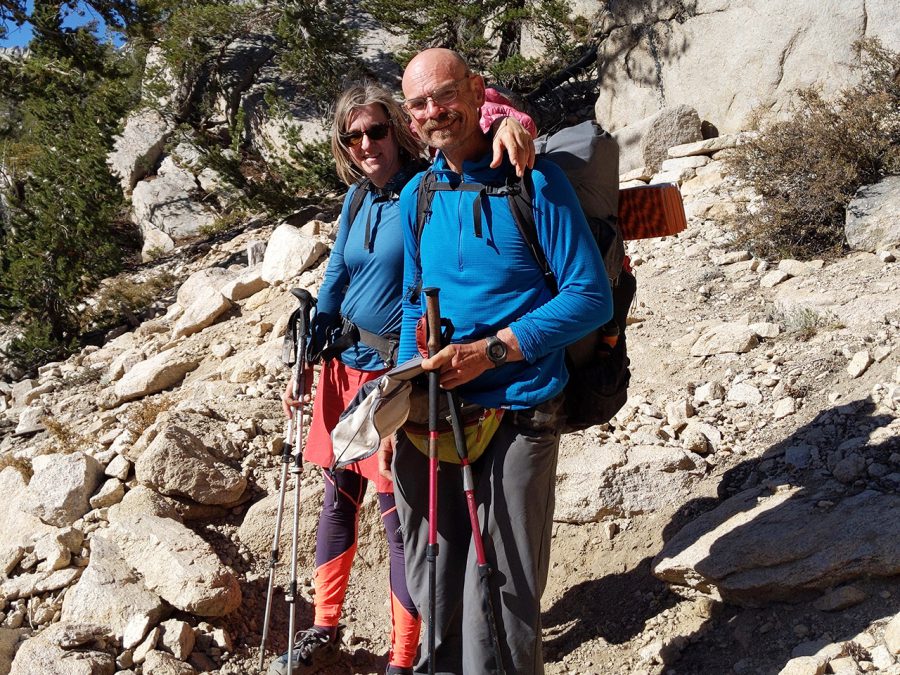
Mike and Naomi on the PCT in the Sierra. Photo by Liz Thomas
The secret to Mike and Naomi’s success is that they consciously chose hiking as what they wanted to prioritize in their life. “I could’ve stayed at the company and been promoted,” Mike told me. But instead, they chose an unconventional path that makes them happy. They still use their technical skills and expertise, just as they did when they worked for companies. But now they have the freedom to choose which clients they work with and when they work with clients. Now they have the freedom to hike every year.
It takes a lot of bravery and courage to exit the path that is “expected” of us. Mike and Naomi are stellar examples in the hiking community of people who have made the hiking lifestyle work.
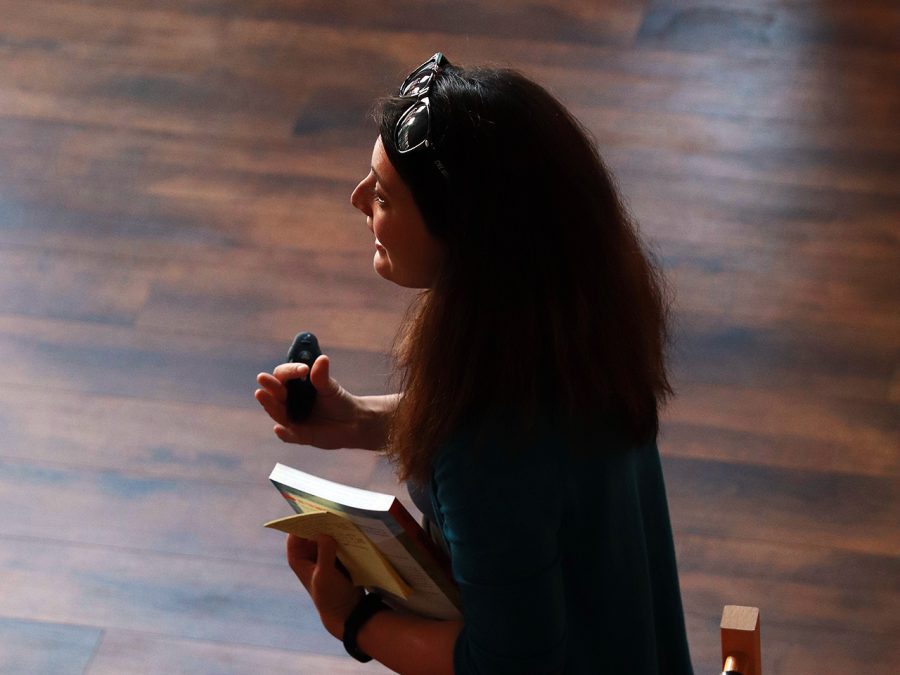
Liz Thomas giving a talk at Montbell in Boulder by John Carr
Related Articles
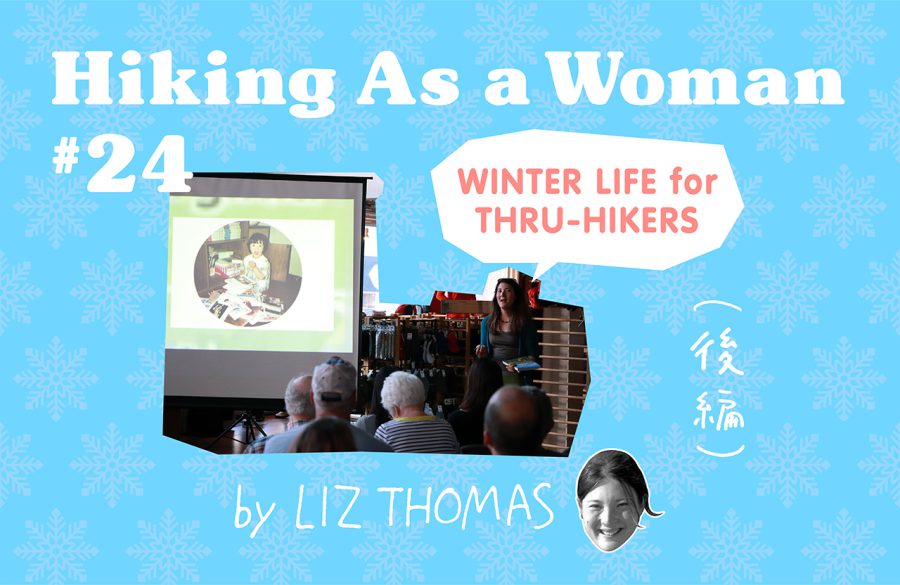
リズ・トーマスのハイキング・アズ・ア・ウーマン#24 / スルーハイカーは冬に何をしているの?(後編)節約して暮らす&冬に歩くハイカー
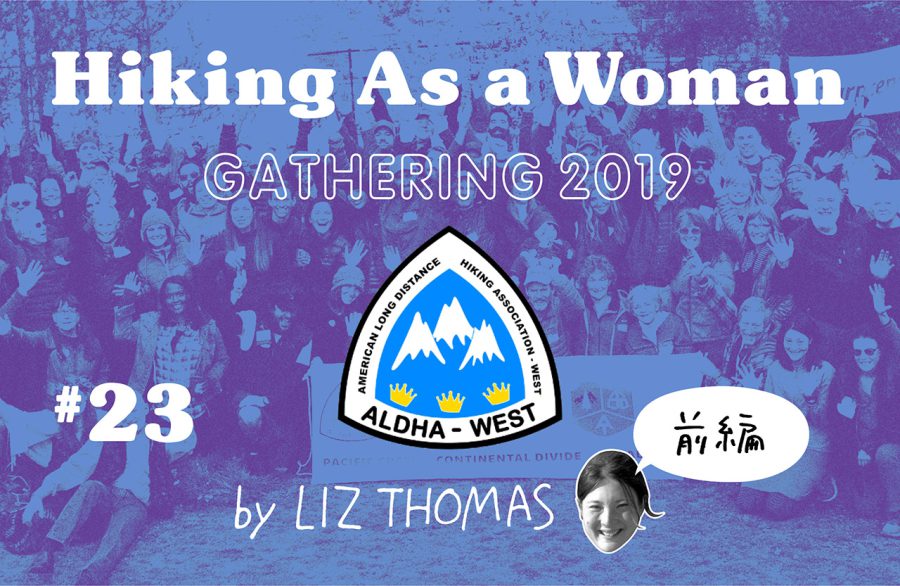
リズ・トーマスのハイキング・アズ・ア・ウーマン#23 / ALDHA-West Gathering 〜ハイキング・コミュニティのビッグイベント〜 (前編)
- « 前へ
- 2 / 2
- 次へ »
TAGS:

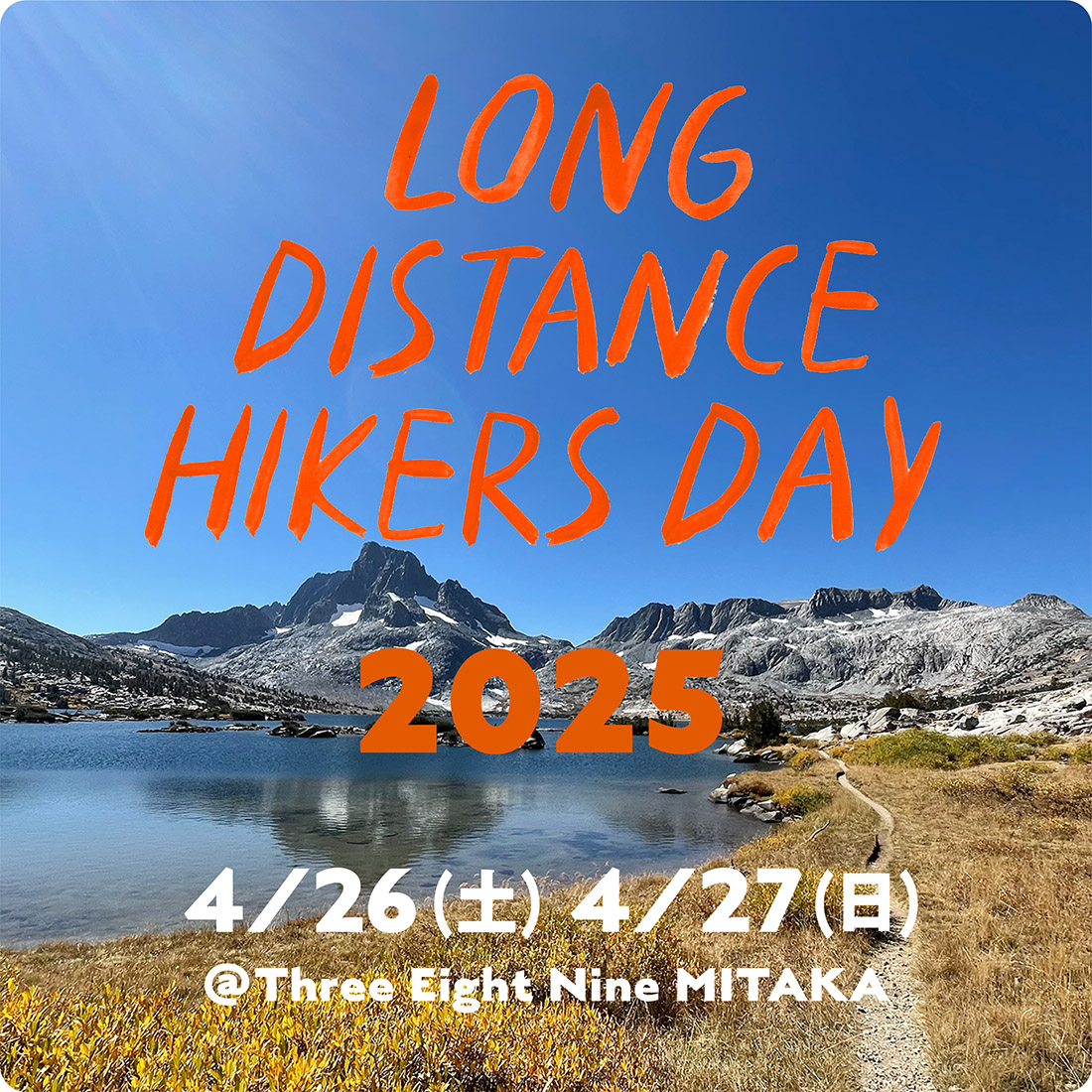
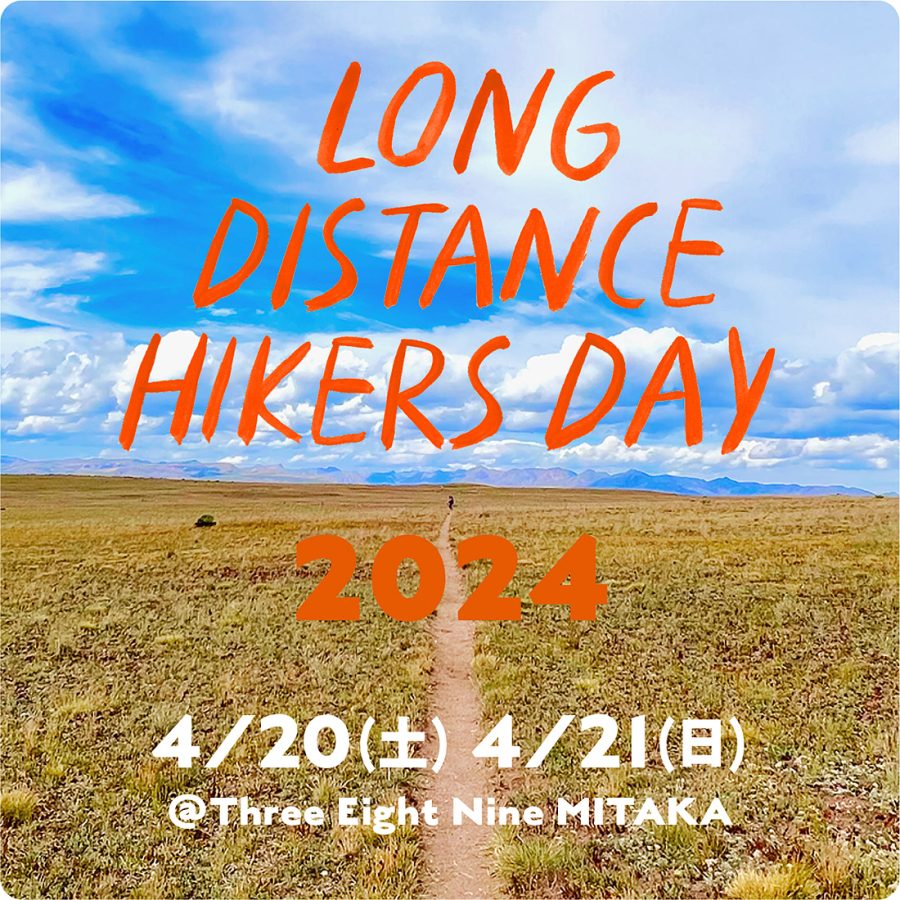
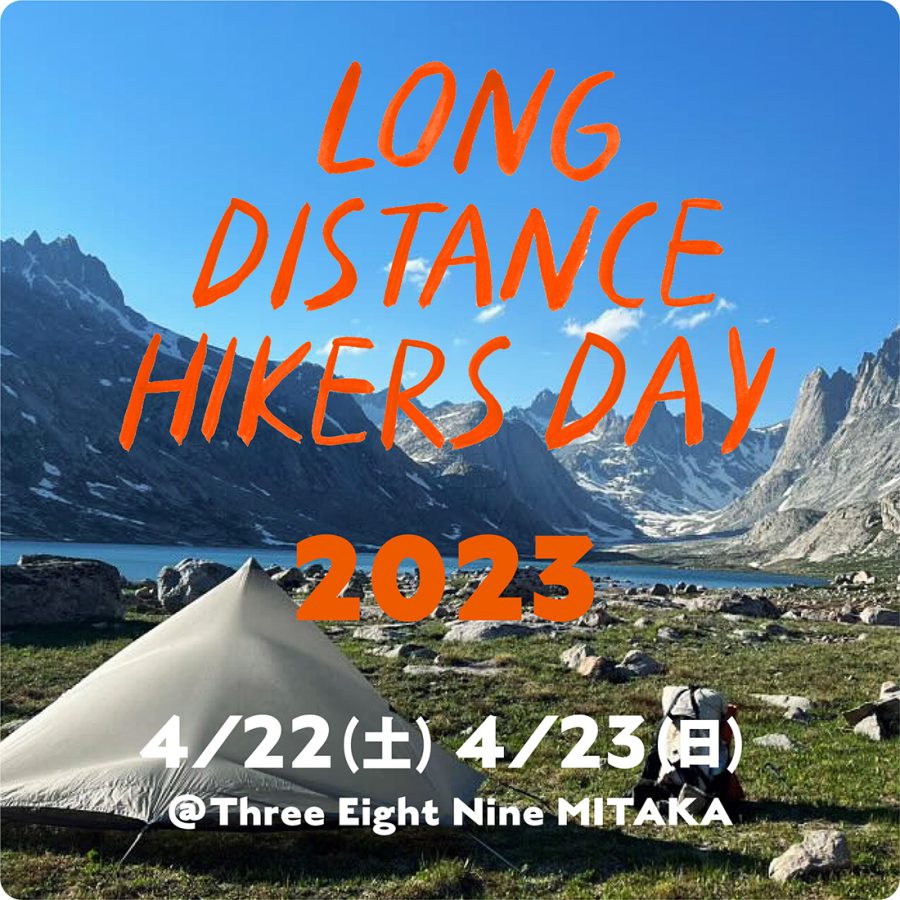










 ULギアを自作するための生地、プラパーツ、ジッパー…
ULギアを自作するための生地、プラパーツ、ジッパー…  ZimmerBuilt | TailWater P…
ZimmerBuilt | TailWater P…  ZimmerBuilt | PocketWater…
ZimmerBuilt | PocketWater…  ZimmerBuilt | DeadDrift P…
ZimmerBuilt | DeadDrift P…  ZimmerBuilt | Arrowood Ch…
ZimmerBuilt | Arrowood Ch…  ZimmerBuilt | SplitShot C…
ZimmerBuilt | SplitShot C…  ZimmerBuilt | Darter Pack…
ZimmerBuilt | Darter Pack…  ZimmerBuilt | QuickDraw (…
ZimmerBuilt | QuickDraw (…  ZimmerBuilt | Micro Pack …
ZimmerBuilt | Micro Pack … 














